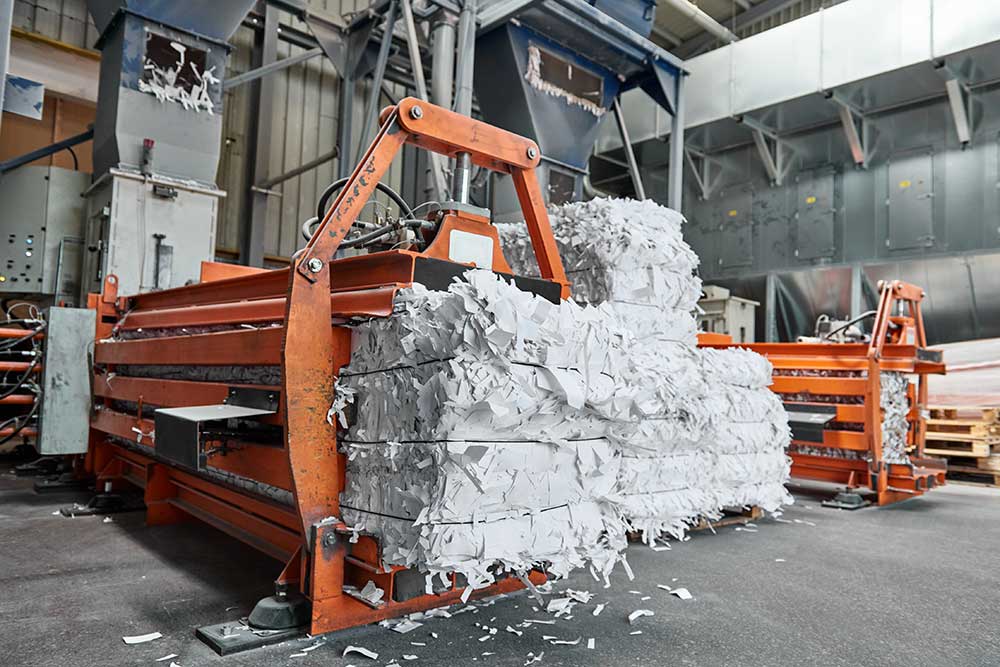The recent price reduction on Old Corrugated Containers (OCC), mainly mixed paper, has sparked a renewed interest in increasing recycled fiber usage. However, as many know, it is more complex than just increasing recycled pulp into the furnish blend. Pulmac subject matter experts can help ensure you have the best tools and solutions to use your pulp.
Challenges of Using Recycled Fiber vs. Virgin Fibers
The Need For Capital Investment
While OCC pricing may have gone down, the cost per ton to get that pulp to the blend chest needs to be considered versus other alternatives. Also, process bottlenecks and site configuration are essential. For example, increasing recycled fiber usage might mean capital investment to add capacity.
Blend Changes
Additionally, in a kraft mill, it is not easy to change the blend of recycled due to the impact on the virgin pulp production rate and recovery boiler utilization. There are also several other similar factors when considering changes to furnish blends while the paramount goal remains constant: to meet customers’ specifications and to minimize generating off-quality tons. In short, adjusting a furnish blend has some complexity that needs to be considered.
Quality of Recycled Fiber
For several reasons, recycled fiber is of lower quality than virgin fiber. Contaminants are inherently difficult to remove and impact both the equipment and pulp produced. Additionally, recycled fiber can vary widely in fiber length, shape, and other important furnish quality properties. When fiber goes through the papermaking processes like stock prep pressing and drying, it loses bonding capability each time it is recycled. This means that recycled fiber typically produces a weaker product, or sheet, than virgin fiber.
Variability in Bale Quality
An additional problem for recycled fiber is the variability in bale quality is much higher than virgin fiber. While virgin pulp mill upsets do happen, recycled fiber, by its nature, is inherently variable. It is hard to know what you are feeding the pulper. Quality swings can occur simply because a different bale was processed. Recycled fiber bales can have different sources, such as OCC, Mixed Papers, Pre-Consumer, Post-Consumer, and others. Each source can have differing qualities, but even with a higher-quality source such as OCC, the bale can have high variability of fiber properties because not all OCC are the same.
Given these problems, recycled fiber use can appear to be daunting. However, there are opportunities to take advantage of online measurements and data analytics to understand how the furnish is being developed within the process and to determine the optimal use of recycled fiber to meet quality targets at the lowest cost.
How to Take Advantage of The Benefits of Recycled Fiber – The Scenario
Measurement With PulpEye
It begins with online measurement for furnish quality. PulpEye provides a complete profile of furnish properties as fast as every 5 minutes. This allows the mill to know the quality of each fiber source in near-realtime. Configured appropriately, a quality swing could be anticipated and identified quickly enough to adjust before the sheet gets to the reel and possibly be outside of spec.
Analytics and Data Analysis
With data from PulpEye and other process inputs from a DCS/SCADA, a data analytics tool like Seeq® can be used to derive the relationships of furnish properties, along with process data and QCS data, the product quality at the reel. This is critical since recycled fiber can adversely affect strength properties.
- Seeq can establish these models to analyze changes for their effect on quality.
- Seeq can incorporate other independent variables in this model, such as wet-end chemistry, refining, and press load.
- With the cost information for raw materials, such as furnish and chemicals, the optimal furnish blend and operating conditions can be determined to meet quality objectives at the lowest cost.
Then Automation Implementation
Finally, an automated solution that can dynamically control variables at their optimal targets to meet quality objectives at the lowest cost can ensure your paper mill is always at its peak performance. An automated solution can ensure that reels don’t have to be downgraded or sent to broke, giving you optimal economic operation.
Conclusion
There is an opportunity to take advantage of recycled fiber in your furnish blend – read our use case Using MP Recycled Fiber Source Optimization To Save Money.
Let Pulmac be your partner to make your mill more profitable and sustainable.


